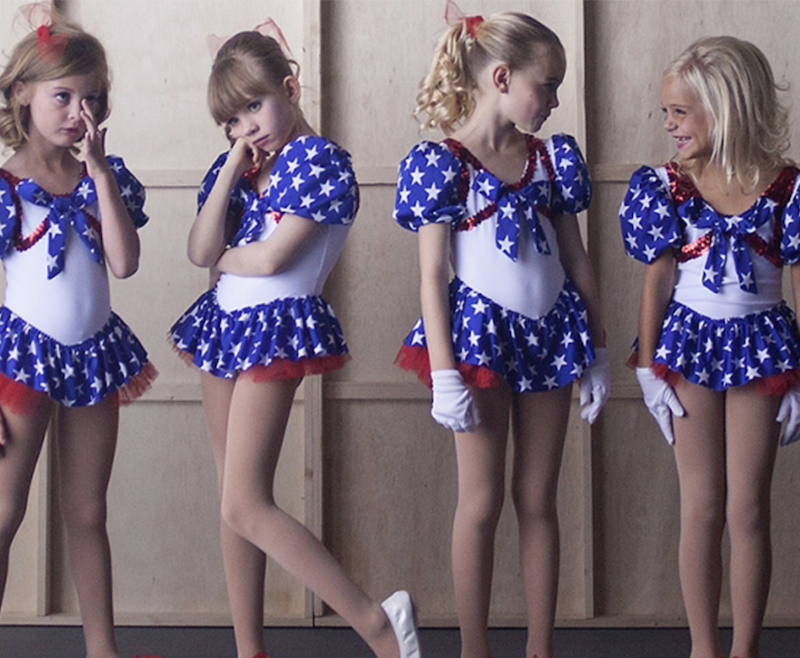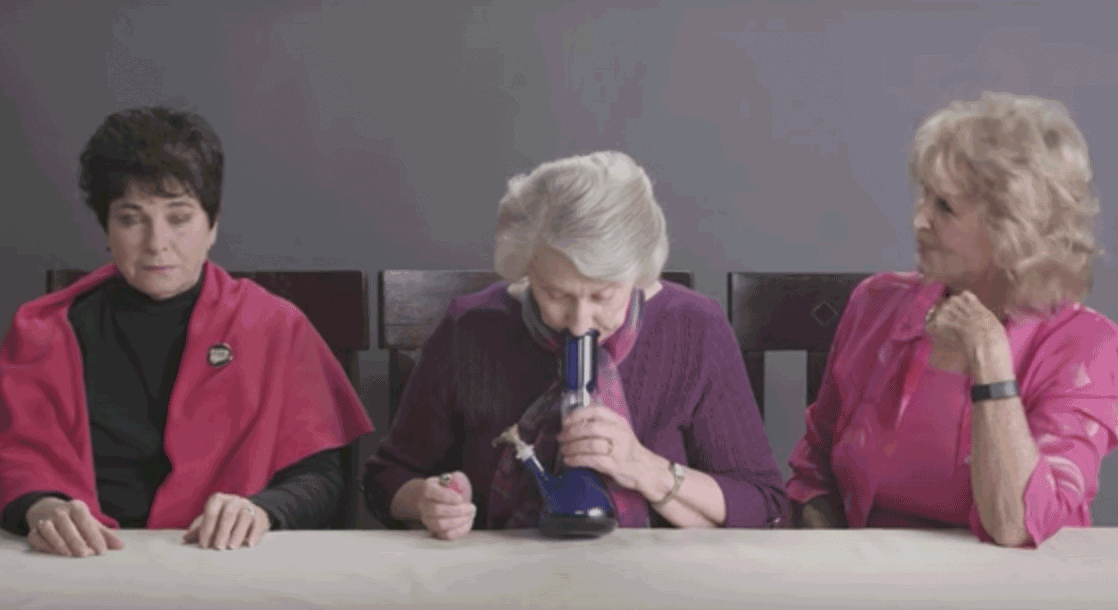Lead image via Netflix
In the modern world, there are few shared experiences — “alone, together” often feels more apt. Never again will there be a TV finale that gets the ratings of MASH. Even events like sports championships and award shows feel less significant to a fractured culture with each passing year, as audiences are given more and more options beamed to whatever device they’re carrying in their pocket. In a media landscape of infinite possibility, it often seems that one of the only shared experiences we have left is tragedy. Specifically, the kinds of news stories that catch national attention are one of the few things that unites us: scandals, war, and murder — mutual misery. The idea that trauma is all that we have left to talk about at the watercooler is at the heart of the new Netflix documentary from Kitty Green, Casting JonBenet.
The film revisits the murder case of child beauty queen JonBenet Ramsey, a girl from Boulder, Colorado who was killed in her home on Christmas Day in 1996. If you remember the year following JonBenet’s slaying, you remember the grocery store magazine aisles plastered with her image, from People Magazine to the National Enquirer. You may remember episode after episode of Nightline and 60 Minutes focusing on her passing. You may also remember that everywhere you went, there was JonBenet, in a sparkling cowboy hat, painted with rouge.
Nowhere was this more true than in Boulder, where the Ramseys lived. Green’s film explores how JonBenet’s death — and the media footprint that followed — still reverberates through the community there even today. The premise of the documentary is that Green says she’s making a narrative film about JonBenet in the style of a Lifetime movie, but this time she will cast local Colorado actors. Thespians and average joes alike line up for the chance to play JonBenet’s father, mother, and eccentric neighbor. In reality, though, the plan to make a biopic is a sleight-of-hand, and Green is actually using the casting sessions as narrative fodder.
Each aspiring actor shares his or her recollection and connection to the murder, presumably unaware that these stories will be used in the film. Some auditioners lived near the Ramseys or did business with the father, John. Police officers hoping to play police officers in the fake film talk about how their precincts still use the killing as a training exercise and cautionary tale today. In one of the most striking sequences of the film, a group of Colorado mall Santas (hoping to play JonBenet’s neighbor who was a consumer Kris Kringle himself) meditate on the sacred duties that come with being a mall Santa. Most of them believe that a mall Santa could never be capable of killing a child. One of them concludes that it couldn’t have been one of their own. It had to be the “bitch” mother who did it.
These kind of revelations — sometimes harsh, sometimes hilarious, sometimes confounding — are what make the documentary most interesting. When the actors describe the Ramseys, they also describe themselves. Mothers who have been in pageants are sure that the rigors of pageant life had nothing to do with the killing. Fathers are positive that a dad could never have a hand in killing a daughter, despite centuries of evidence to the contrary. Some performers describe contentious relationships with their siblings, but insist that, sure, brothers and sisters fight, but it’s never that bad.
At its best, the non-fiction film explores tragedy as folklore. O.J., the Menendez Brothers, Casey Anthony, and JonBenet: these are our modern day morality tales, the stories we tell ourselves to fall asleep at night. There are bad people out there, but their circumstances are so different from our own. How do I know they’re nothing like me? Well, I read about it in People Magazine.
While the documentary explores something deeply human, its shortcomings have to do with a lack of humanity in the filmmaking. In the 80-minute film, we see dozens of actors, each with their own snippet of a reaction to the killings. We revisit a few of them and dig deeply into their perspective on the crime, but most of them we only see for a moment. One man is into BDSM. Another is a community theater veteran straight out of Waiting for Guffman. An actress shows up with her pageant sash from way back when. These moments are sometimes punctuated with odd sequences, like boys smashing a watermelon as a simulation of JonBenet’s head, or highly cinematic cut scenes made humorous by the severely inexperienced performers. In moments like these, the filmmaking becomes condescending, punching down at people who seem to be lured in front of the camera under false pretenses. In examining the brutality of the media spotlight, it seems that creative team became a bit cruel themselves. By indulging this cruelty, the film falls short of what it could have been.
That said, it is safe to say that you won’t see anything like Casting JonBenet this year. There are moments of intense beauty, such as when the camera catches about eight different Ramsey couples simultaneously running their lines on the same set, or when the auditioning parents reflect on the nature of what it means to be a father, daughter, brother, or son. But, unlike last year’s most masterful experimental documentary, I Am Not Your Negro, the craft doesn’t always rise above the concept. The film has a great premise, but promises a depth it never quite delivers. In making a film about a fake film chronicling people’s perceptions of media coverage of a crime, something is lost in the tragic nesting doll.
The final moments of Casting JonBenet feature a young beauty queen, presumably the actress playing JonBenet, dancing in full pageant garb through the dark and empty halls of a faux Ramsey house set on a soundstage. The sequence, ultimately, is a fine metaphor for the film: a brilliant idea that isn’t quite pulled off, yet leaves you thinking about it long after the credits roll.
Follow Brenden on Twitter











